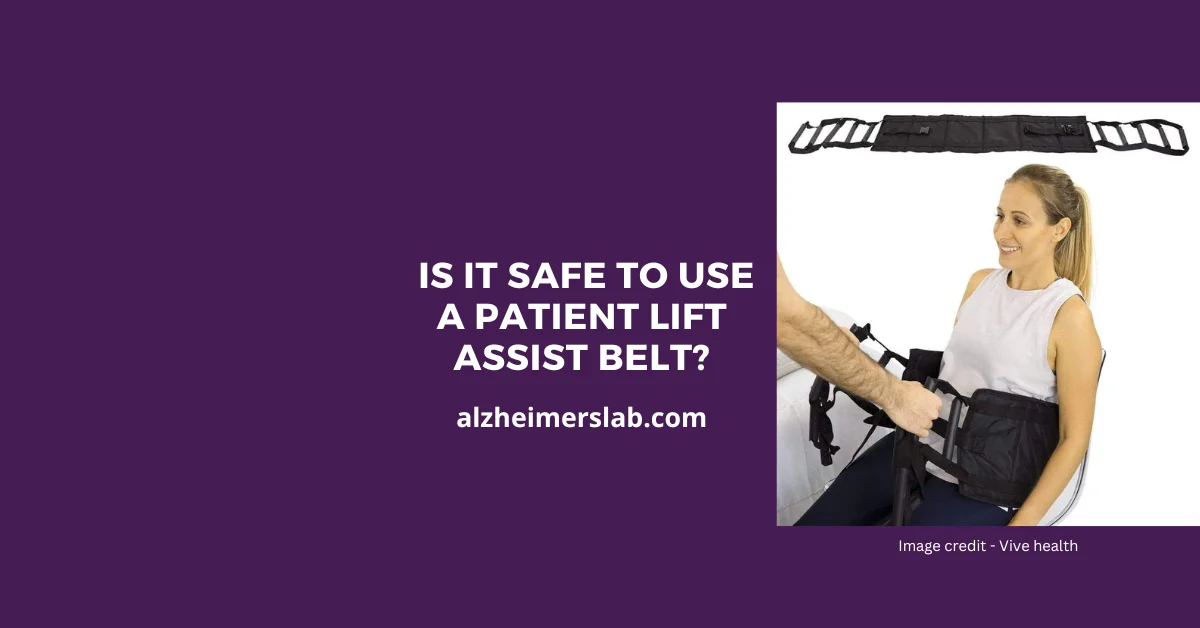Is it Safe to Use a Patient Lift Assist Belt?
Are you or someone you know caring for a loved one with limited mobility or physical disabilities? If so, you may have come across patient lift assist belts, a popular assistive device designed to aid caregivers in safely lifting and transferring patients. However, with any medical equipment, safety is of utmost importance. In this blog post, I will answer the question: Is it safe to use a patient lift assist belt?
Understanding Patient Lift Assist Belts

Patient lift assist belts, also known as transfer belts or gait belts, are specialized devices crafted from durable materials such as nylon or polyester. These belts feature sturdy handles and fasteners, designed to be worn around the waist of the patient. The primary purpose of these belts is to provide support and stability during patient transfers, assisting caregivers in safely lifting, moving, or ambulating the patient.
Benefits of Using a Patient Lift Assist Belt
Using a patient lift assist belt can offer numerous benefits to both patients and caregivers. Let’s explore some of the advantages:
Enhanced Safety
Patient lift assist belts provide an extra layer of security during transfers, reducing the risk of slips, falls, or mishaps that could lead to injuries for both the patient and the caregiver.
Reduced Strain on Caregivers
Lifting and transferring patients manually can put considerable strain on caregivers’ backs and muscles. By using a patient lift assist belt, caregivers can maintain better posture and reduce the risk of musculoskeletal injuries.
Increased Independence for Patients
For patients with some degree of mobility, using a lift assist belt can offer increased independence and confidence in their ability to move around with support.
Proper Usage and Guidelines
While patient lift assist belts can be beneficial, it is essential to use them correctly to ensure safety and effectiveness. Here are some guidelines for proper usage:
Assess Patient’s Suitability
Not all patients may be suitable candidates for using a lift assist belt. It is crucial to assess the patient’s medical condition, weight, and cognitive ability before using the device.
Proper Fitting
Ensure the lift assist belt is appropriately sized for the patient. The belt should fit snugly around the waist without causing discomfort or impeding breathing.
Two-Person Assistance
In cases where the patient’s weight or mobility requires additional support, it is advisable to have two caregivers present during transfers.
Training
Caregivers should receive proper training on how to use the patient lift assist belt correctly. Training sessions should include techniques for safe transfers and best practices to avoid injuries.
Potential Risks and Considerations
While patient lift assist belts are designed to improve safety, there are still some potential risks and considerations to be aware of:
Skin Irritation
Prolonged use of the belt or improper fitting could lead to skin irritation or pressure sores. Regular inspections and ensuring the belt is clean and dry can help minimize this risk.
Patient Discomfort
Some patients may find wearing the belt uncomfortable, especially if they have certain medical conditions or skin sensitivities.
Cognitive Impairment
Patients with cognitive impairment may not understand how to use the lift assist belt correctly, which can lead to potential risks during transfers.
Alternatives to Patient Lift Assist Belts
For some patients or caregivers, patient lift assist belts may not be the most suitable option. In such cases, consider exploring alternative assistive devices or techniques:
Ceiling-mounted Lift Systems
Ceiling-mounted lift systems are an excellent alternative for patients who require frequent transfers. These systems provide smooth, effortless transfers and require minimal physical effort from caregivers.
Transfer Slings
Transfer slings offer similar benefits to lift assist belts but are designed to work with mechanical lifts. They provide extra support during transfers and are more suitable for patients with specific medical conditions.
Conclusion
The decision to use a patient lift assist belt ultimately depends on the individual patient’s needs, caregiver capabilities, and the specific caregiving situation. While these belts can offer significant benefits in terms of safety and ease of patient transfers, it is essential to use them correctly and consider alternative options when necessary.
So, is it safe to use a patient lift assist belt? I believe that when used correctly and with proper training, patient lift assist belts can be a valuable tool in caregiving. However, it is crucial to weigh the potential risks and consider individual circumstances before making a decision.
Now I’d love to hear from you. Have you used a patient lift assist belt before? What was your experience? Do you have any questions or concerns about their usage? Please share your thoughts in the comments section below, and let’s continue the conversation.

